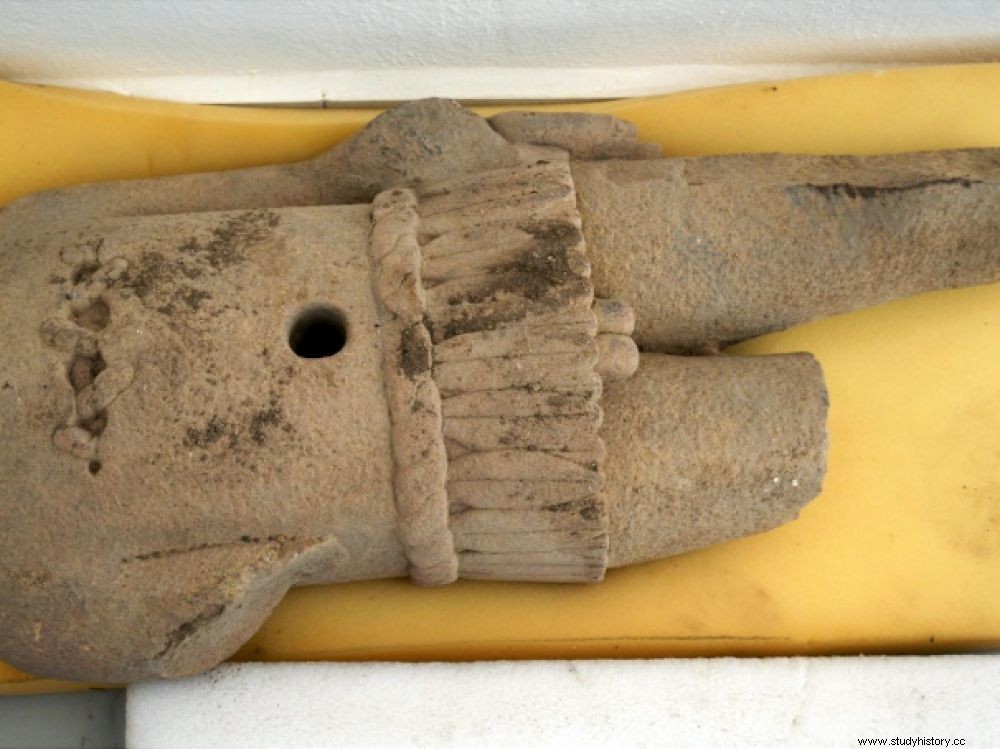Archaeologists have discovered for the first time in Mexico a temple dedicated to Xipe Totec, an important deity of Aztec mythology, announced the National Institute of Anthropology and History (INAH).

Fragment of sculpture representing the torso of the pre-Hispanic god Xipe Tótec found in the 1st temple dedicated to this deity, discovered on October 12, 2018.
"Xipe Totec (Our Lord the Flayed) was one of the most important gods in pre-Hispanic times. His influence (...) was recognized by many western, central and Gulf civilizations of Mexico. However, no temple directly associated with his cult had ever been discovered ", INAH said in a statement, Thursday, January 3, 2019.
Human sacrifices
This 12-meter-long and 3.5-meter-high temple is composed of two sacrificial altars, three volcanic stone sculptures and various architectural elements located in a pyramidal basement of the Ndachjian-Tehuacán Archaeological Zone, in the State of Puebla (center). The carvings in the temple, believed to have been in use between 1,000 and 1,260 A.D., depict two skulls about 70 centimeters tall, weighing about 200 kg, and a bust covered in sacrificial skin that personify Xipe Totec, god associated with fertility, at the regeneration of agricultural and war cycles.
One of the most important festivals at the time was the "Tlacaxipehualiztli ", which in the Náhuatl language means "to put on the skin of the flayed ". It was commonly celebrated on two circular altars:one to sacrifice the captives through gladiator or arrow fights, and the other for the butchering to the glory of Xipe Totec. The priests were dressed in the skin of the sacrificed, which was then deposited in small cavities. This "shows the importance " of the discovery "of the two sacrificial altars in the pyramidal basement, and of two holes in the ground (in front of the altars) which were filled with earth (...) and were under the stone skulls ", indicates the INAH. In the temple, the sculpture of the torso of Xipe Tótec is "killed ", that is, fragmented in ritual form, and "it has a hole in the belly which was used, according to the sources, to place a green stone and give it life for ceremonies ", according to the INAH.
